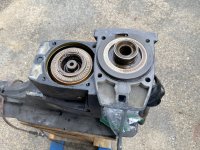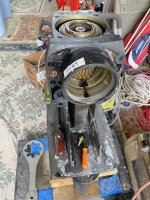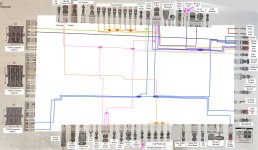Taking a break from electrons today . . . I did some maintenance work on the outdrives.
I noticed that the gear oil had not been changed in a while, and I was starting to get a delayed shift on the port outdrive. After draining down the old gear oil . . . one thing led to another . .

.
Here is the guts of the upper housing taken out . . .

.
Laid out on the work table - I was going mostly from memory, as I had taken the outdrives apart on my previous boat.

.
The cone clutch surfaces definitely had some glazing, so I roughed them up a bit and put it all back together.
Tomorrow is the starboard outdrive's turn.
If I have time, I'll be back on the electrical stuff. . . . but there is Friday. Going away for the weekend. Then traveling much of next week. My days are running out.

























